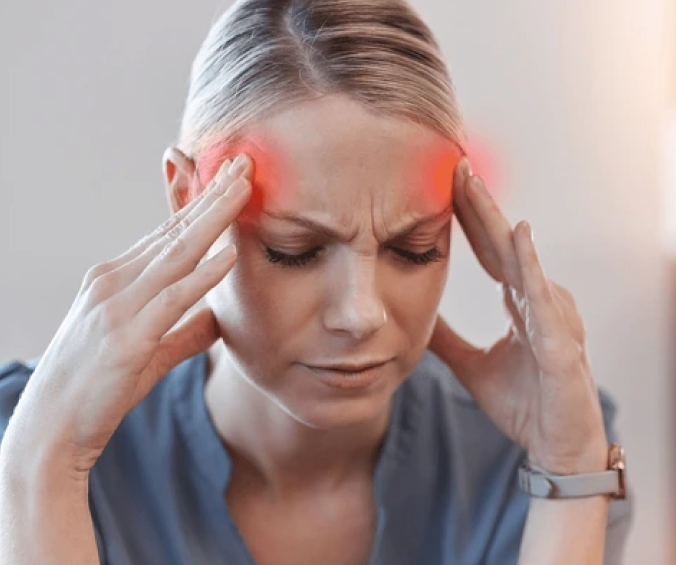
Headache Disorders

Migraines
Migraines are a type of headache disorder characterized by intense, throbbing pain, usually on one side of the head. They often come with additional symptoms such as nausea, vomiting, and sensitivity to light or sound. Migraines can be triggered by various factors, including stress, certain foods, hormonal changes, and environmental conditions. Managing migraines typically involves a combination of lifestyle changes, medications, and identifying personal triggers to reduce the frequency and severity of episodes. Understanding these factors can help in developing an effective treatment plan to improve quality of life and alleviate migraine symptoms.
Cervicogenic Headaches
Cervicogenic headaches are a type of secondary headache that originates from issues in the cervical spine (neck) and the surrounding structures. These headaches are typically characterized by pain that starts in the neck or base of the skull and radiates to the forehead, temples, or behind the eyes. They are often associated with neck stiffness, limited range of motion, and pain triggered by neck movements or certain positions. Cervicogenic headaches can be caused by neck injuries, poor posture, or degenerative changes in the cervical spine. Treatment usually focuses on addressing the underlying neck issues through physical therapy, improved posture, and sometimes medications to relieve both neck pain and headache symptoms.


Tension and Cluster Headaches
Tension headaches and cluster headaches are two common types of headache disorders with distinct characteristics and triggers.
Tension Headaches are the most prevalent type of headache, often described as a constant, dull ache or pressure around the forehead, temples, or the back of the head. They are frequently associated with stress, poor posture, or muscle tension in the neck and shoulders. Tension headaches can range from mild to moderate in intensity and are typically not accompanied by nausea or sensitivity to light and sound. Management strategies often include stress reduction techniques, over-the-counter pain relievers, and addressing muscle tension through physical therapy.
Cluster Headaches are a more severe and less common type of headache that occurs in cyclical patterns or clusters, often at the same time each day. These headaches are characterized by excruciating, one-sided pain usually centered around the eye or temple, often accompanied by symptoms like tearing, nasal congestion, or redness in the eye. Cluster headaches can last from 15 minutes to several hours and may occur multiple times a day during a cluster period. Treatment may involve acute medications to abort the headache and preventive treatments to reduce the frequency of cluster periods.
Other Chronic Headache Conditions
Other chronic headache conditions encompass a range of persistent headache disorders that do not fall into the more common categories of migraines, tension headaches, or cluster headaches. These can include:
- Chronic Daily Headaches: These are headaches that occur 15 or more days per month for at least three months. They can be a result of various underlying issues and may include daily or nearly daily tension-type headaches or transformed migraines.
- Medication Overuse Headaches: Also known as rebound headaches, these occur when headache relief medications are used too frequently, leading to a cycle of worsening headache symptoms.
- Hemiplegic Migraines: A rare and severe type of migraine that involves temporary paralysis or weakness on one side of the body, along with other typical migraine symptoms.
- New Daily Persistent Headaches: These headaches begin suddenly and become constant, persisting every day without significant relief. They can be challenging to diagnose and treat effectively.
These chronic conditions often require a comprehensive approach to diagnosis and management, including lifestyle modifications, preventive treatments, and careful medication use to improve quality of life and reduce the frequency and intensity of headaches.

